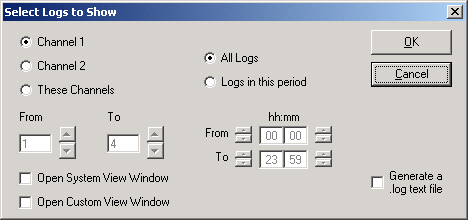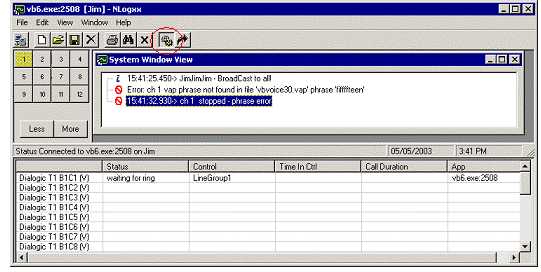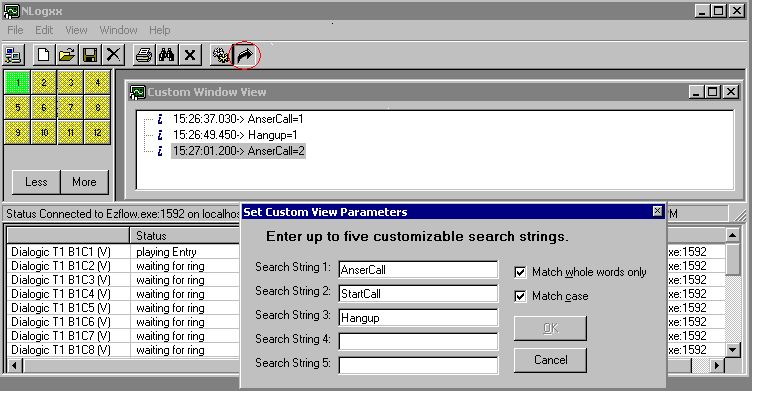
You can view both real-time and historical logs with NLog. System view displays all system events in a single MDI window; custom view displays customized search strings.
As well, VBVoice allows you to broadcast logs to all NLog channel windows and VBVoice supports application logs and SNMP alarms.
Click on the Open button
Select the log file for the desired time period and/or channel(s)
If you do not specify a particular application, then the historical log will show data for all applications that were logged during that period.

System view displays all system events in a single MDI window. These system events include system messages, error and invalid messages, control error messages, and call stop error messages.

Custom view displays customized search strings. You can customize up to five user-defined search strings to filter the application logs into a single MDI window, called the NLog Custom Window View.

Add information to the log by calling the VBVLog AddLogItem method. This allows you to broadcast the log item to all NLog windows by setting the channel parameter to 0.
Dim mylog as new VBVLogDim
Ch as Integer
Ch = 0 `set to 0
to broadcast to all channels
Mylog.AddLogItem Ch, 0, "this is a
line of text to broadcast to all channels"
NLog has support for application logs. For example, you may log events of callers' menu selections or of hang ups occurring in certain callflow sections. You can combine this with a system view, a custom view, or a broadcast log.
For example, to track all calls being answered, add the following code to a LineGroup Exit event:
Private Sub LineGroup1_Exit(ByVal channel As Integer, Node As Integer)
Dim mylog As New VBVLog
Static StartCall As Long
StartCall =
StartCall + 1
Dim bcast as Integer
bcast = 0 `set to
broadcast to all channels
mylog.AddLogItem bcast, 0, "StartCall="
& CStr(StartCall)
End Sub
The System View window would now display this particular log item. Setting the Custom View - Search String parameter would also display this log item in the Custom View window.
Application Logs are written to the standard daily log files in the following format:
05-05 12:36:04.330 030505123604.268 EZFLOW.EXE:2212/-1 564 12:36:04.260-> StartCall=4~~~-3~0~0~4
/-1 represents all log broadcasts. StartCall=4 means that four calls were answered up until that point in time.
NLog also supports SNMP alarms. The NLog server will raise an SNMP alarm when certain error events are logged. Learn how to translate VBVoice errors into SNMP compatible traps.
Read more about other ways you can manipulate log files, including adding items to log files, flushing the log to disk, and deleting log files.